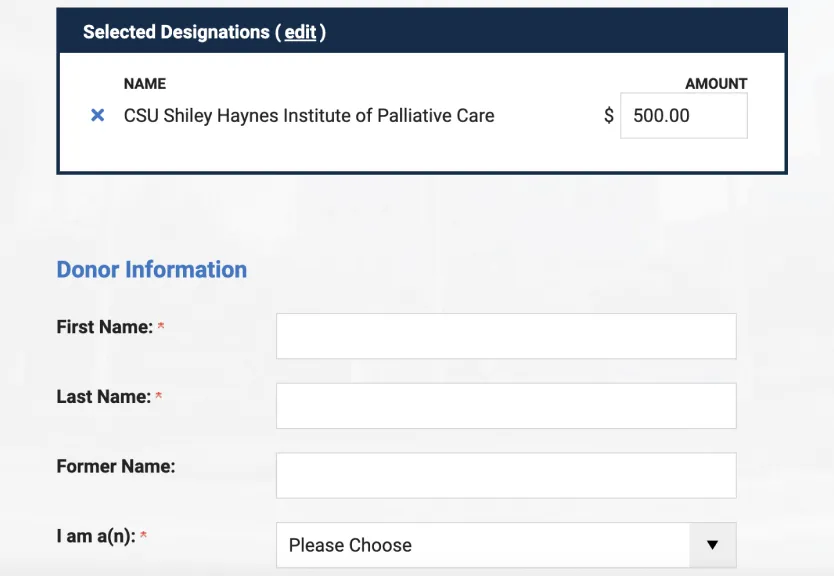Submitted by Helen McNeal, Executive Director, CSU Shiley Institute for Palliative Care
It’s no surprise that the title of this policy brief is Long-Term Services and Supports. Older adults frequently require ongoing services to help with both daily tasks of living. However services alone will not effectively keep people out of the hospital, away from the emergency department and in their homes, rather than a skilled nursing facility. Older adults also need Support to maintain their independence, health and quality of life.
Direct care workers — home health aides and personal care aides – can greatly assist individuals with assistance with meal planning, grocery shopping, errands and other tasks – they are not trained to provide care coordination, pain and symptom management, emotional support, referrals to other home and community services or any of the other proactive services that palliative care providers deliver.
Palliative care, which focuses on alleviating the burdens of illness and symptoms associated with treatment, benefits patients at any stage of a chronic, acute, or life-limiting illness. Palliative care is available to people who are still receiving curative treatments and is optimally provided from the point of diagnosis of a serious or life-limiting illness.
A growing body of research indicates that palliative care offered in all settings, “significantly reduces the number of hospitalizations per patient, the number of days spent in hospital, the probability of readmission, as well as hospital and/or health care costs.”[i],[ii],[iii] A recent study found that patients discharged from the hospital who went home with palliative care had a lower probability of being readmitted to the hospital within 30 days than patients who received non-palliative home care.[iv]
Given that “long-term services and supports remain a priority,”[v] as the White House Conference on Aging seeks solutions to help older Americans “remain independent in the community as they age,”[vi] it is vitally important for palliative care to be included in the discussion and final report.
Palliative care improves the quality of life for patients and families facing serious or chronic illness — whatever the diagnosis or prognosis. Delivered by an interdisciplinary team, it adds an extra layer of support by addressing the physical, emotional, psychosocial and spiritual concerns associated with serious and chronic conditions. Palliative care facilitates communication between healthcare providers, developing one, synthesized care plan in collaboration with the patient and family caregivers as well as primary care and specialist physicians and community service providers. This care plan includes all medications and treatments, recent tests, details regarding advance care planning, and other vital information that all care providers need. This comprehensive, coordinated palliative care helps individuals safely remain at home, or in the care setting of their choice.
In order to improve timely access to this essential service that improves the independence and quality of life of older Americans the following issues must be prioritized by the aging services network:
- Workforce Development: As with the direct care workers, building a palliative care workforce to meet the needs of older Americans is vitally important. In order to meet the complex care needs of older adults, our country needs highly knowledgeable palliative care professionals in the core disciplines of medicine, nursing, social work, chaplaincy, pharmaceutical and associated allied health professions that comprise the expert care teams to provide care needs in communities across the country.
- Access to Information and Services: Palliative care offers benefits and services to individuals from the point of diagnosis on, yet most individuals never receive palliative care. Health care providers as well as Area Agencies on Aging and other community service providers can play a vital role in increasing awareness about this vitally important supportive service.
Addressing these two issues will greatly improve access to comprehensive palliative care that helps older Americans remain safely in their home with the services and support they need.
[i] Kerr, Kathleen, Value Snapshots for Inpatient Palliative Care, Coalition for Compassionate Care, January 2015.
[ii] Kerr, Kathleen, Value Snapshots for Palliative Care Clinics, Coalition for Compassionate Care, January 2015.
[iii] Kerr, Kathleen, Value Snapshots Home-based Palliative Care, Coalition for Compassionate Care, January 2015.
[iv] Ranganathan A, Dougherty M, Waite D, Casarett D. Can Palliative Home Care Reduce 30-Day Readmissions? Results of a Propensity Score Matched Cohort Study. Journal of Palliative Medicine 2013; 16(10):1290-1293.
[v] White House Conference on Aging. Accessed on 6/23/15: (page was removed)
[vi] White House Conference on Aging. Accessed on 6/23/15: (page was removed)
Courses for Professionals
Choose Your Path…
Nursing Professionals
Social Workers
All Health Professionals
Spiritual Care




